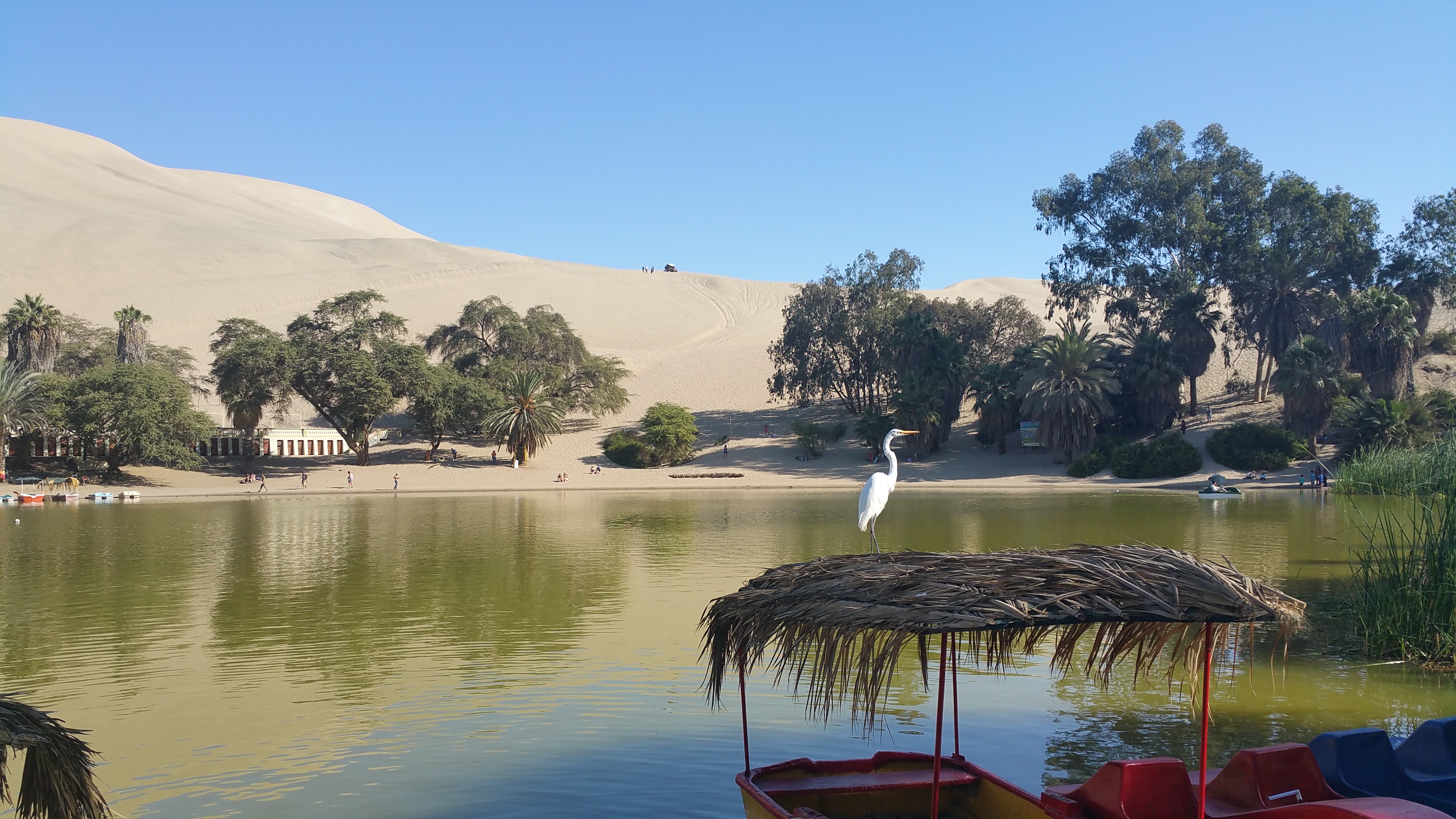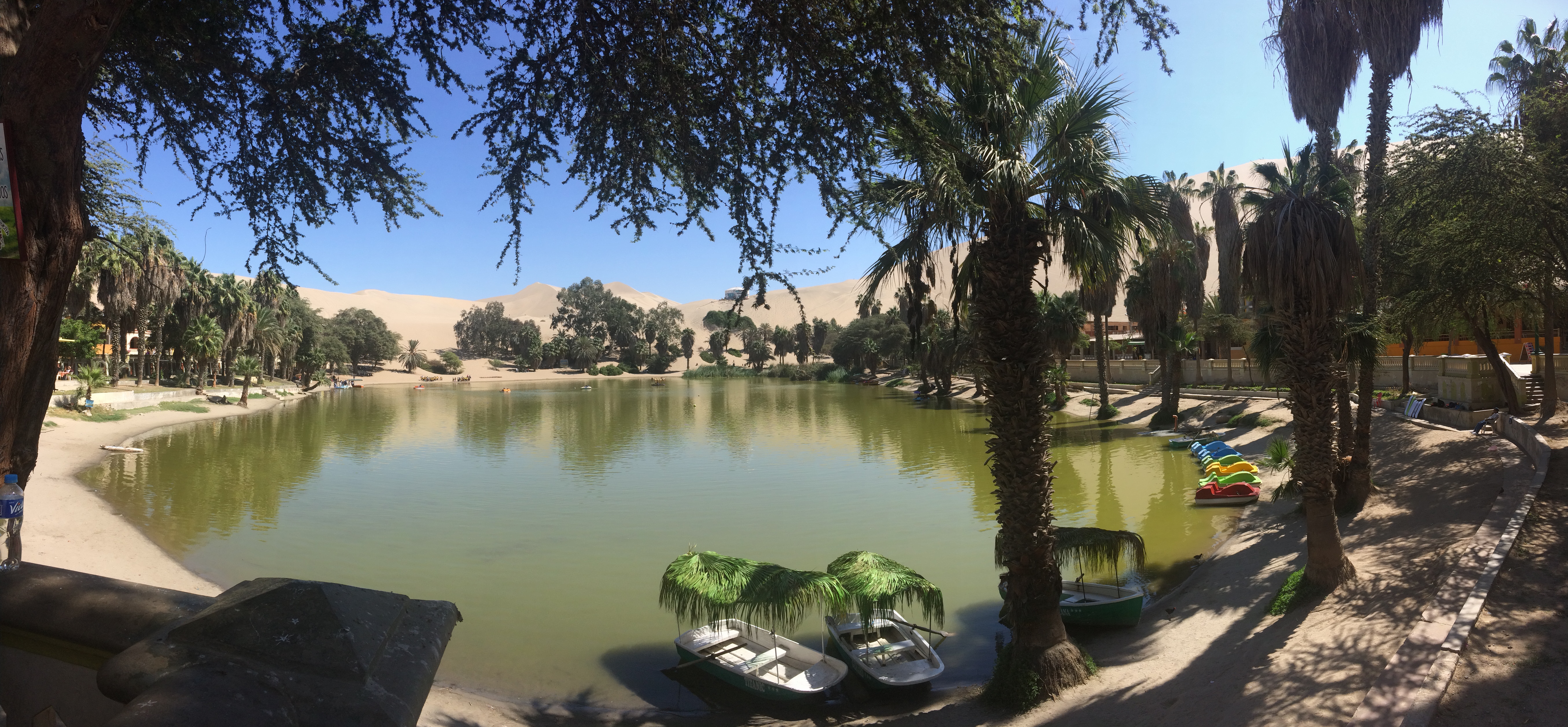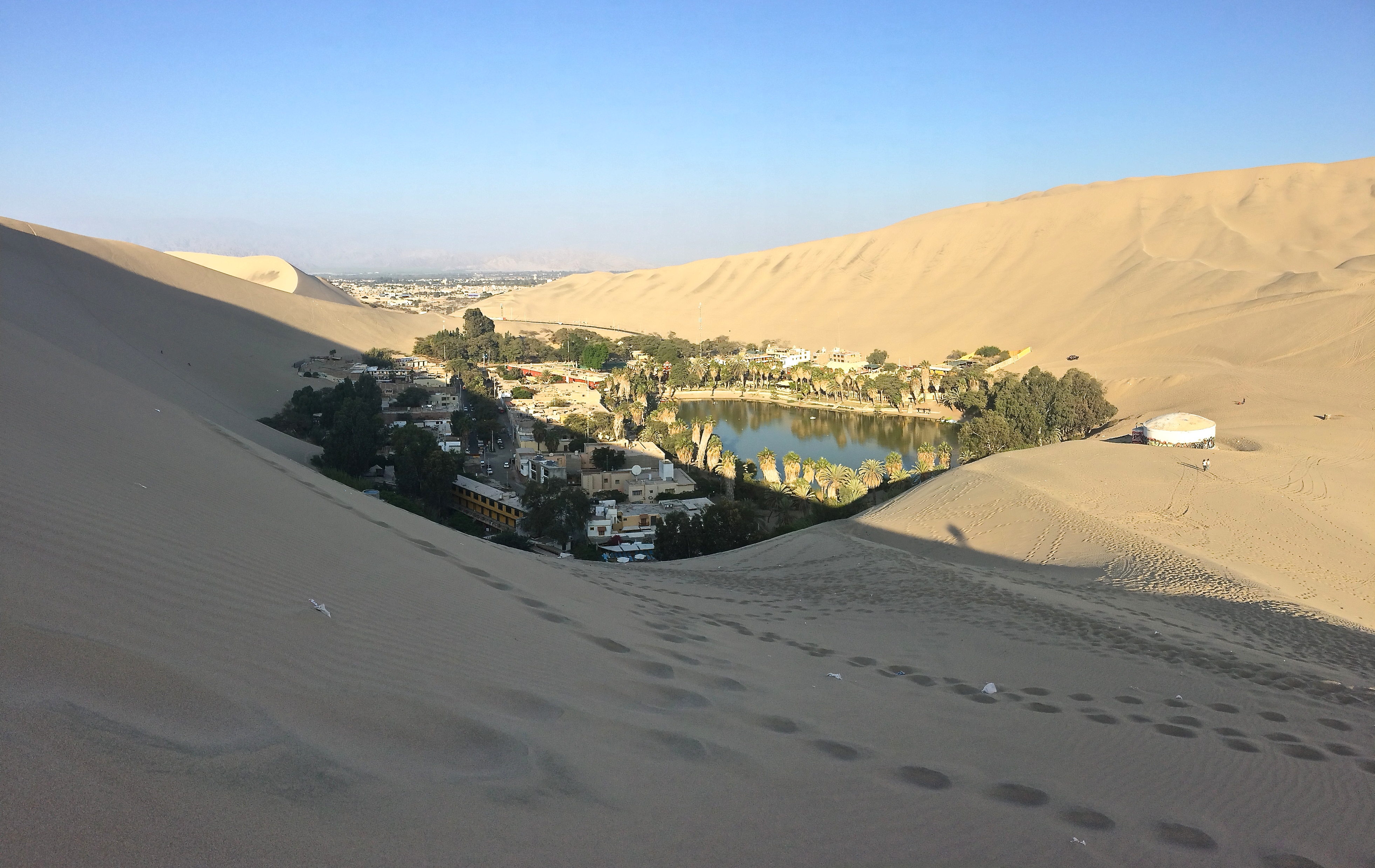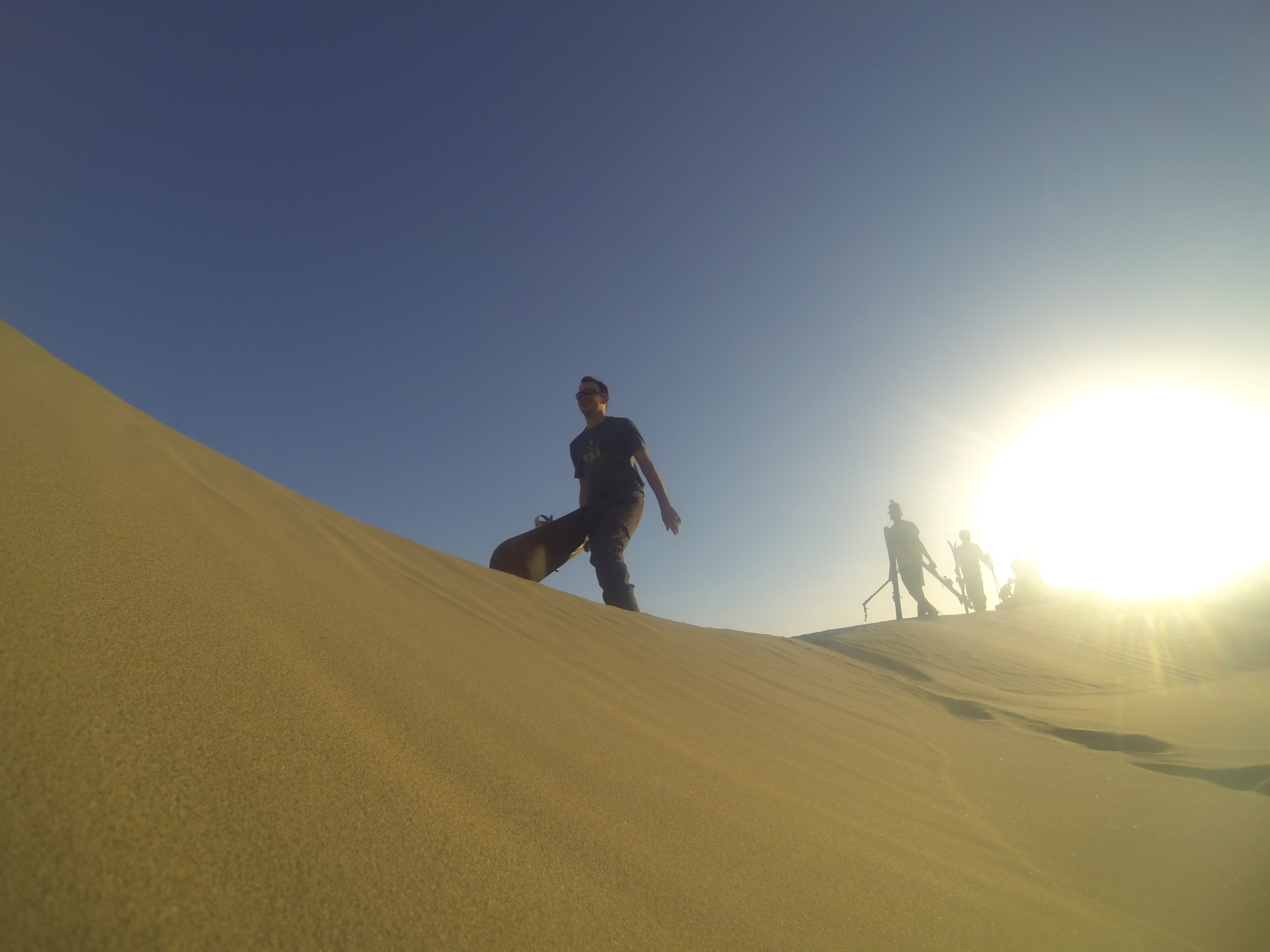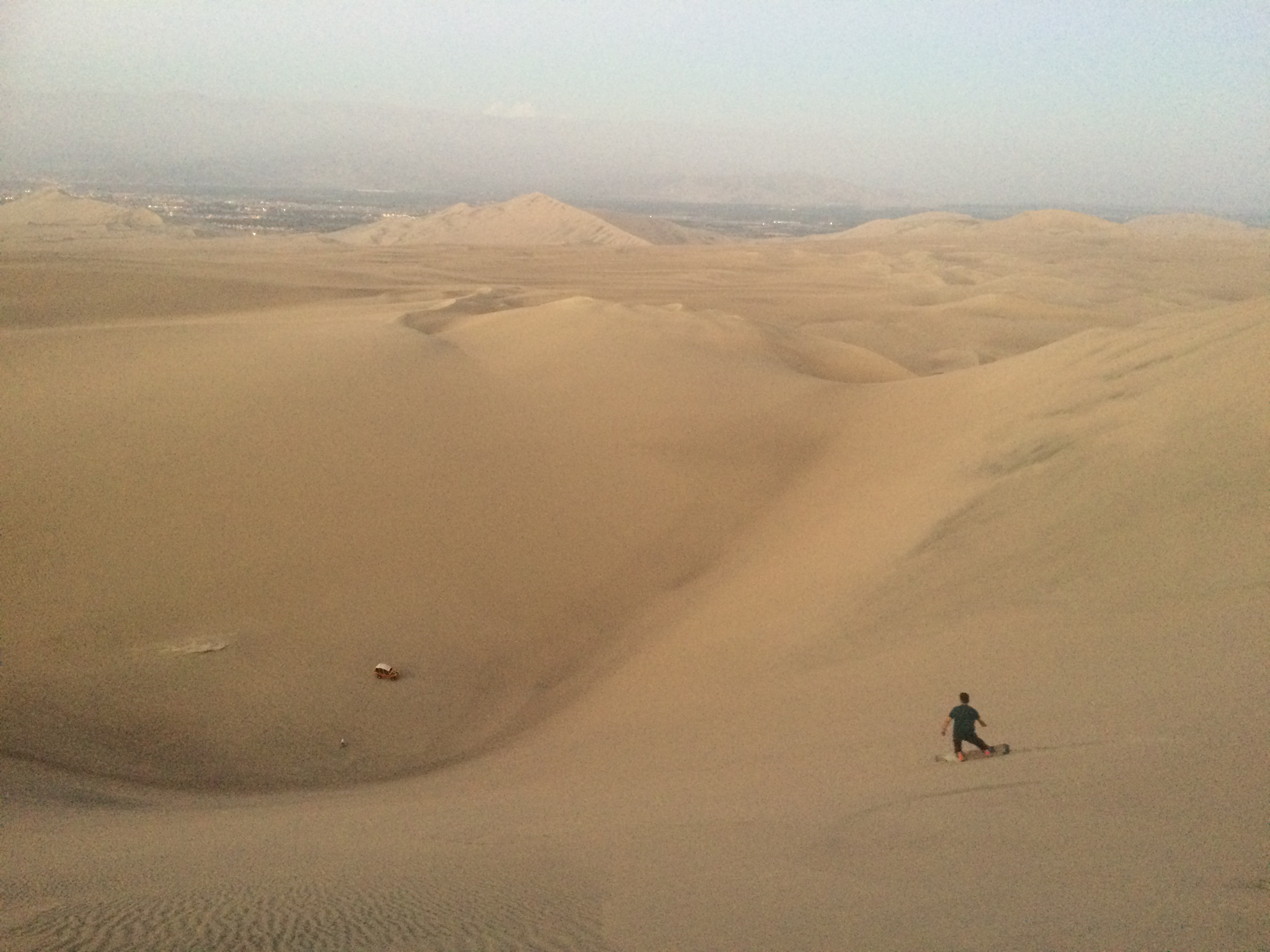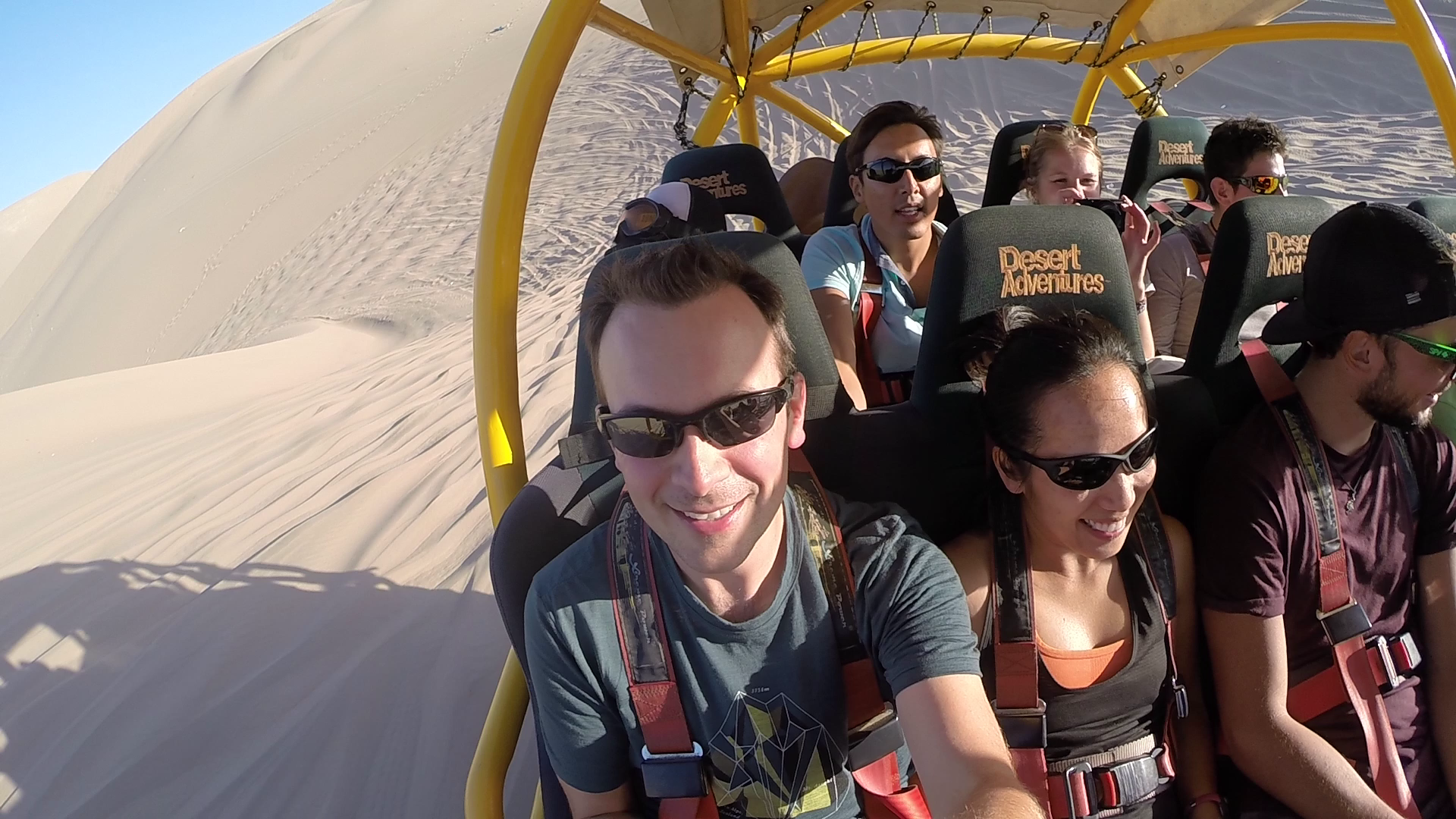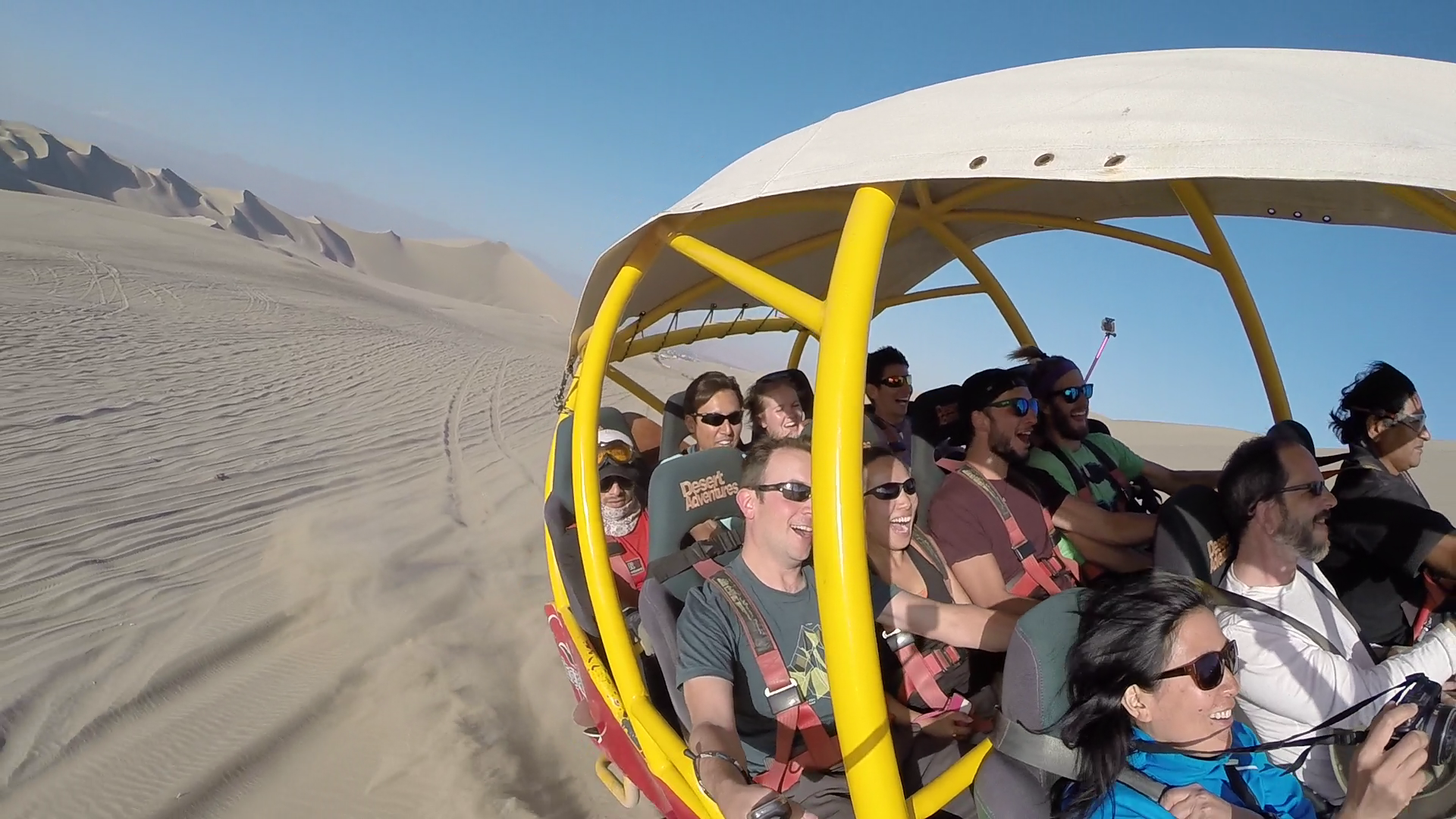Not far south from Lima along the coast of Peru lies the noisy, chaotic city of Ica. My reason for stopping by Ica (and I’m assuming this is the same reason for most tourists) was to see Huacachina, a tiny artificial oasis smack center amidst giant sand dunes. It was incredibly underwhelming once I finally set eyes on this gringo attraction, but we brightened our stay by sandboarding and dune buggying for the first time.
We opted to stay in the city of Ica, 2 km outside of Huacachina, which was only a 3-5 sole (~$1-1.60) cab or moto-taxi ride away. Because Huacachina merely exists as a tourist attraction, there is nothing but overpriced restaurants, bars, and hotels along the murky oasis. From the terrace of our hotel, the massive sand dunes were quite spectacular even from a distance: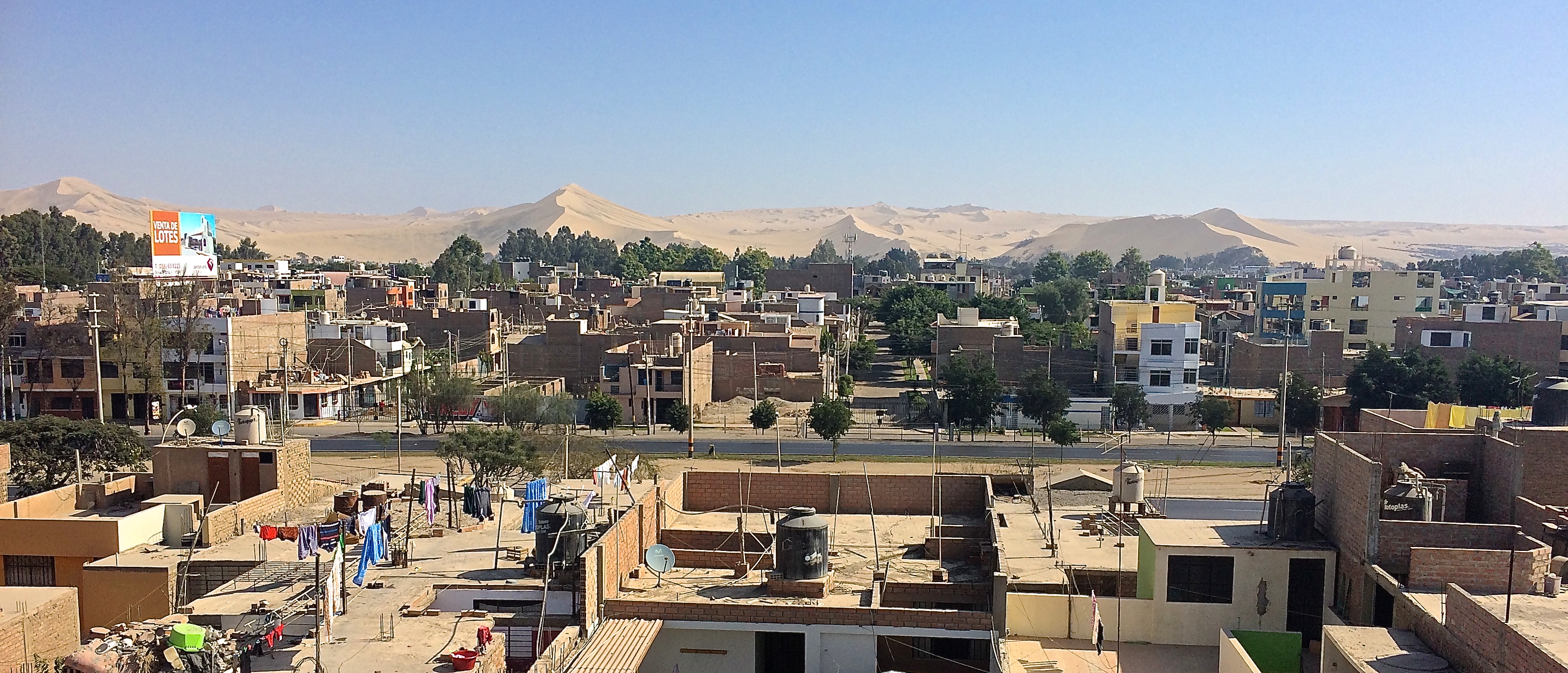
I wasn’t too keen on sandboarding at first because I’m no longer an avid snowboarder, but Huacachina might be one of the better places in the world (or at least in this area) to learn. We were both glad we tried it. Simply saying it was “fun” and “a blast” cannot remotely convey the incredible experience we had with the International Sandboarding & Sandski School, especially since we got to shred sand in a dune buggy after each run.
Walking up the first dune to learn the basics: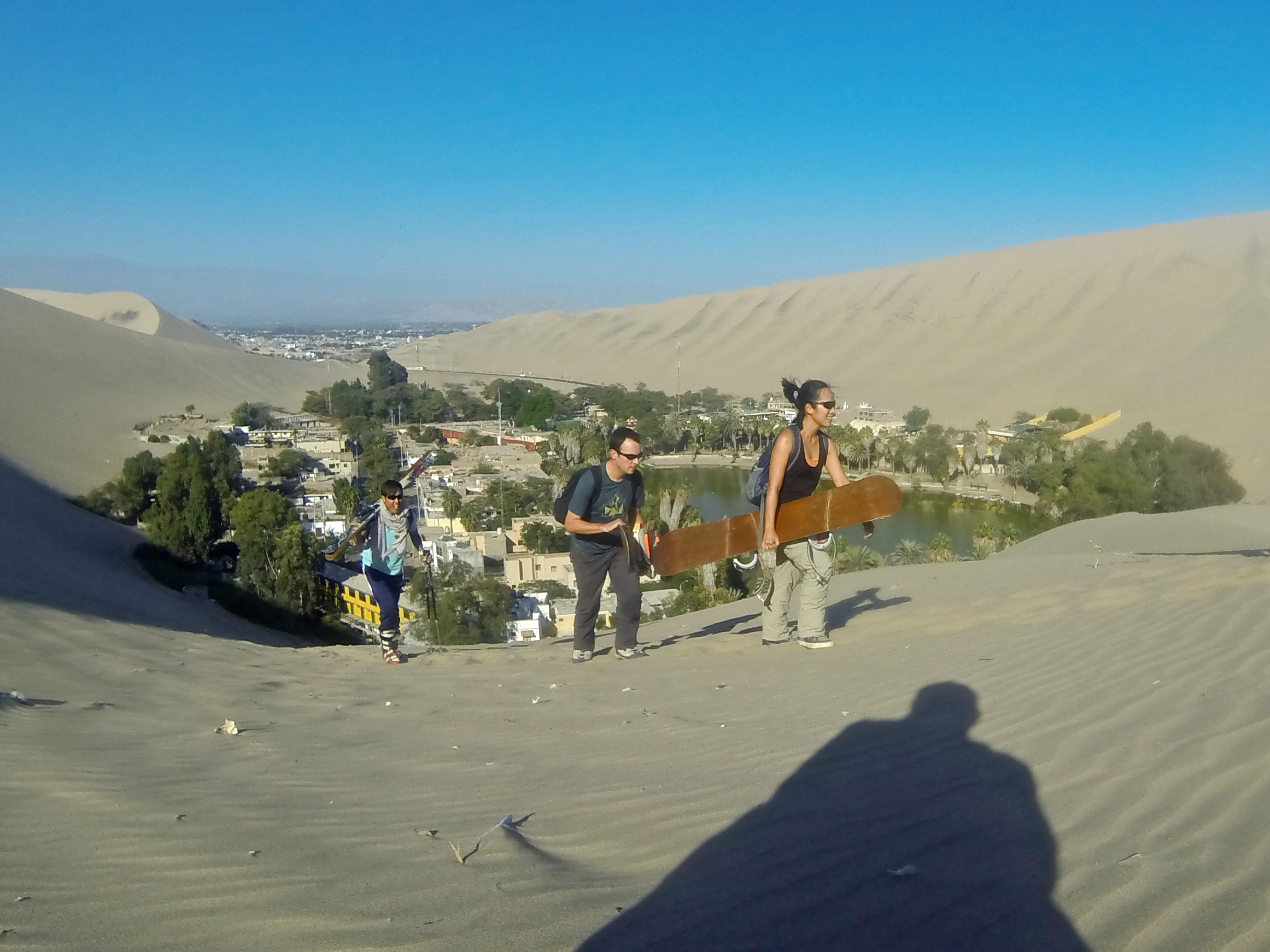
Waxing our boards between each run: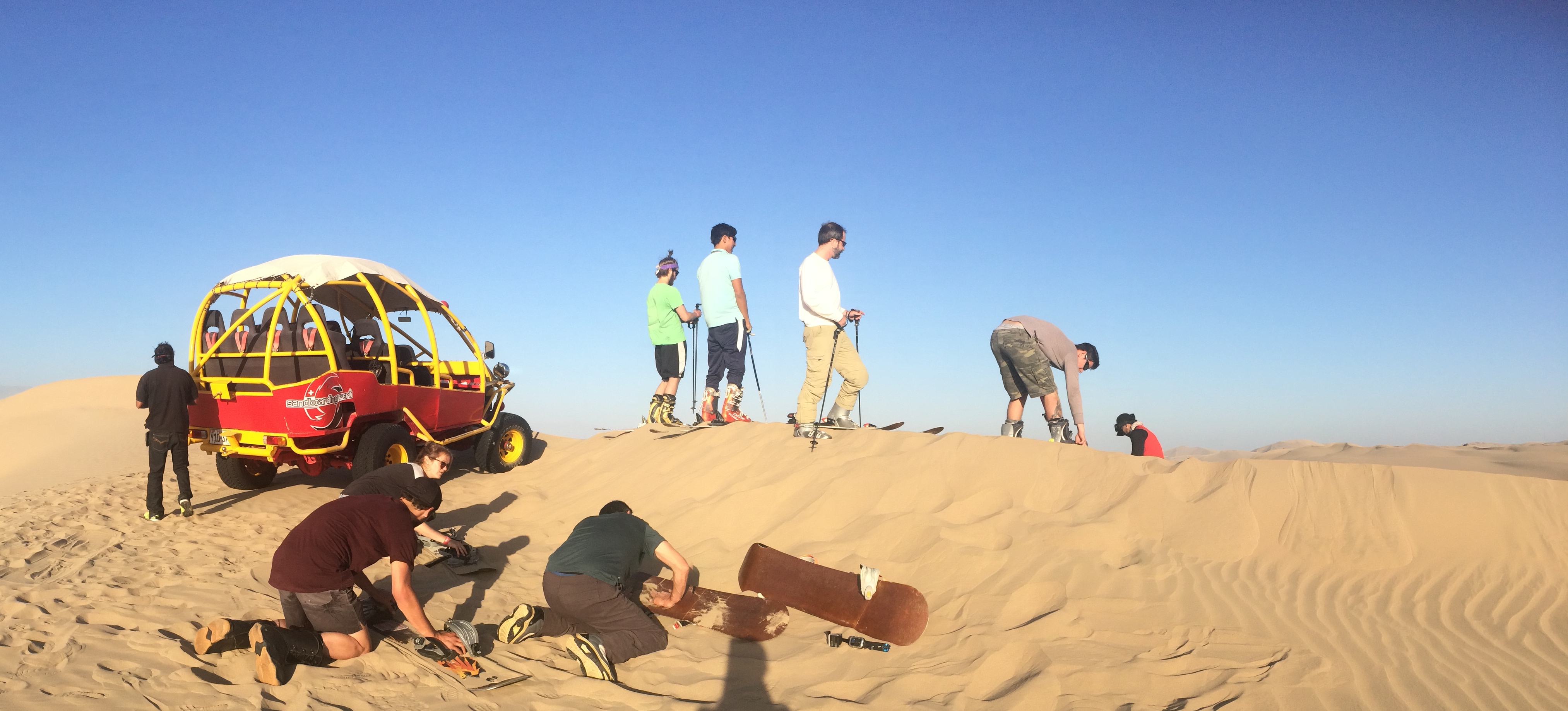
In addition to the artificial oasis of Huacachina, the other attraction Ica has to offer is…wine! Although not the best wine in the world, Ica is the primary city of wine and pisco exports for Peru. 
We did not opt to go wine and pisco tasting with a shit face tour, but we did get slightly drunk touring three bodegas on our own via taxi and colectivo. (All tastings and tours are free!) First we took a cab from our hotel to Tacama, perhaps the cutest and most typical vineyard of all, and the oldest vineyard in all of South America. Pink!
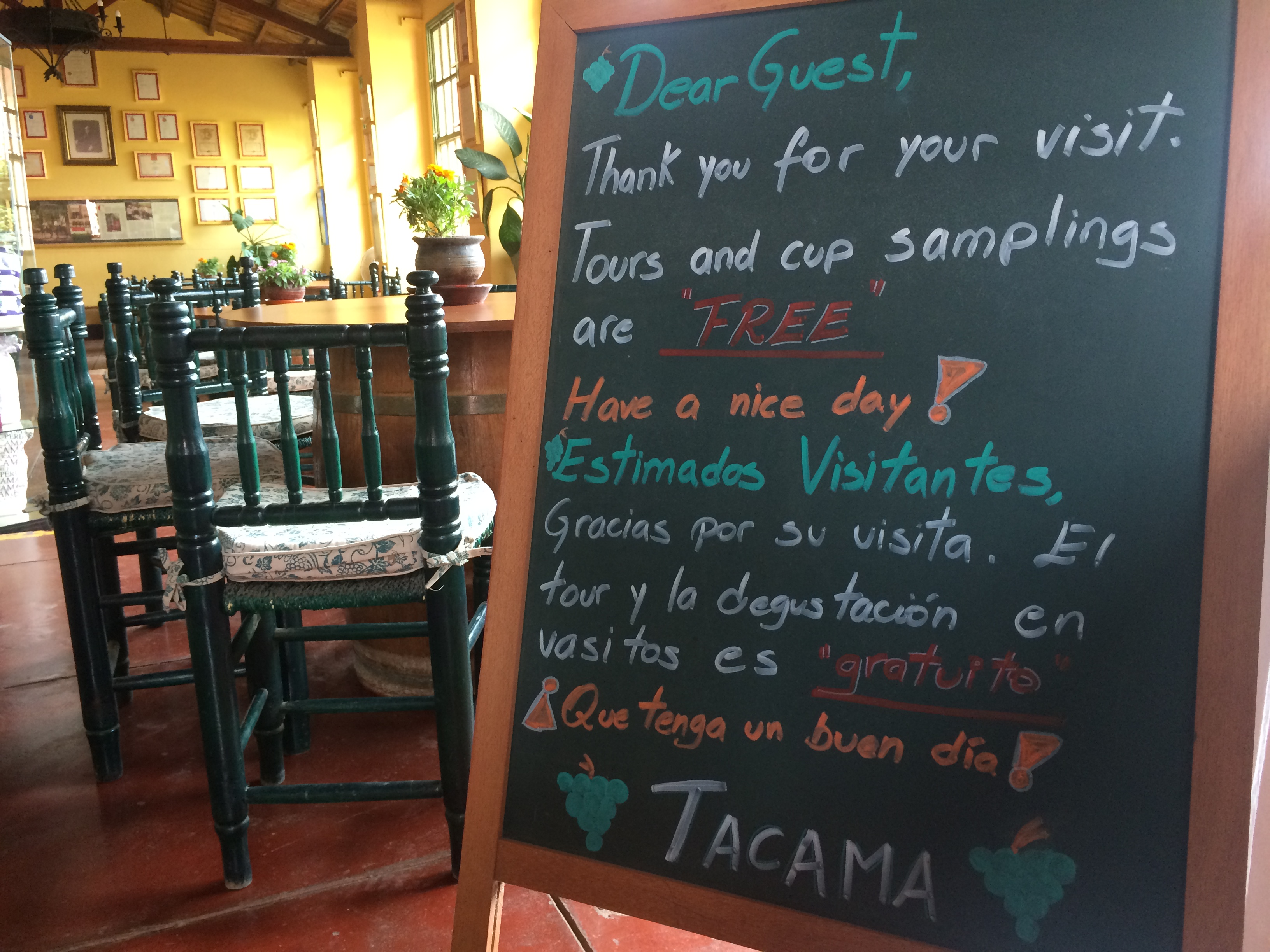
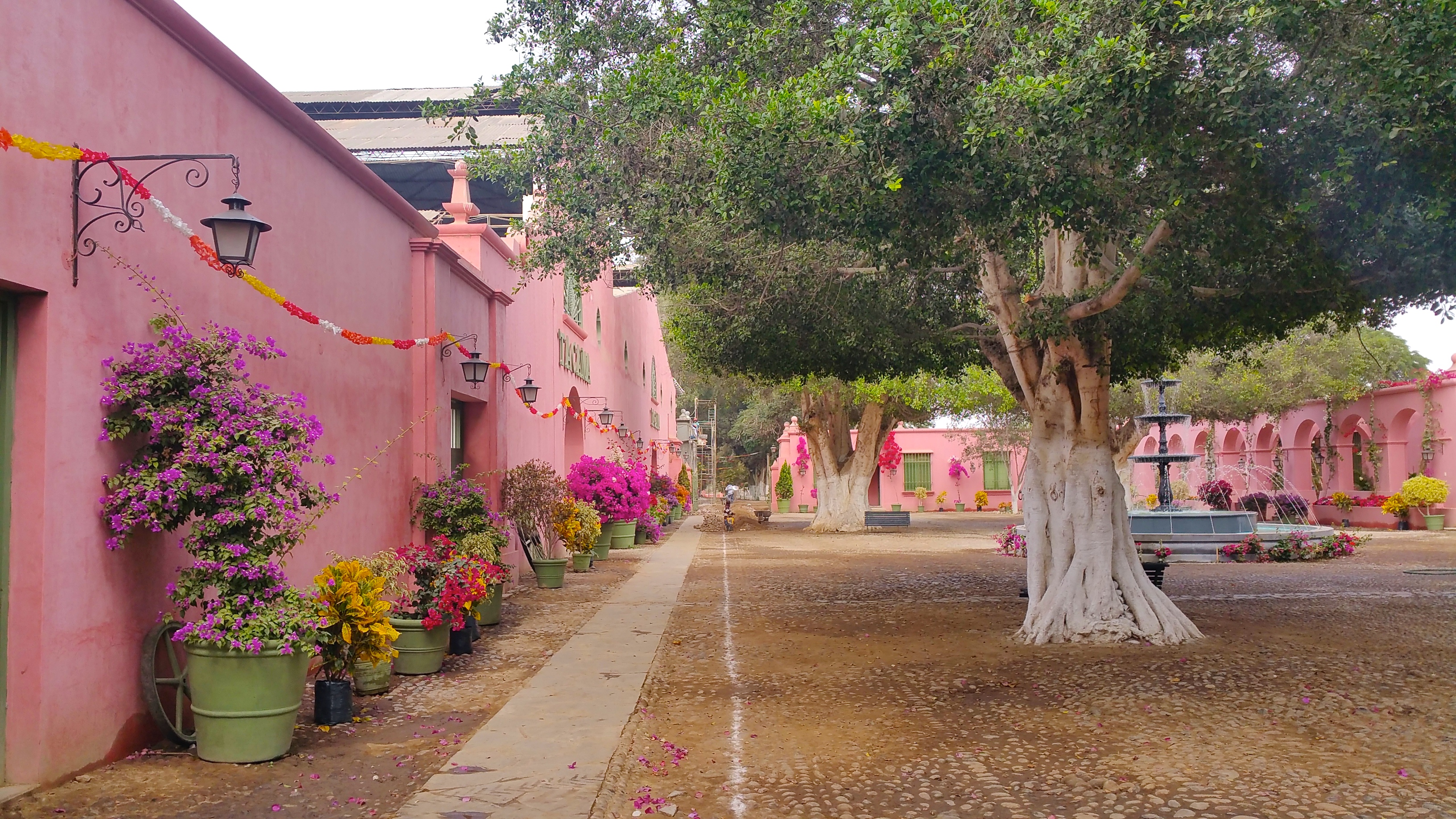
These tastings were modest in size, but they were free, and the pisco was super strong.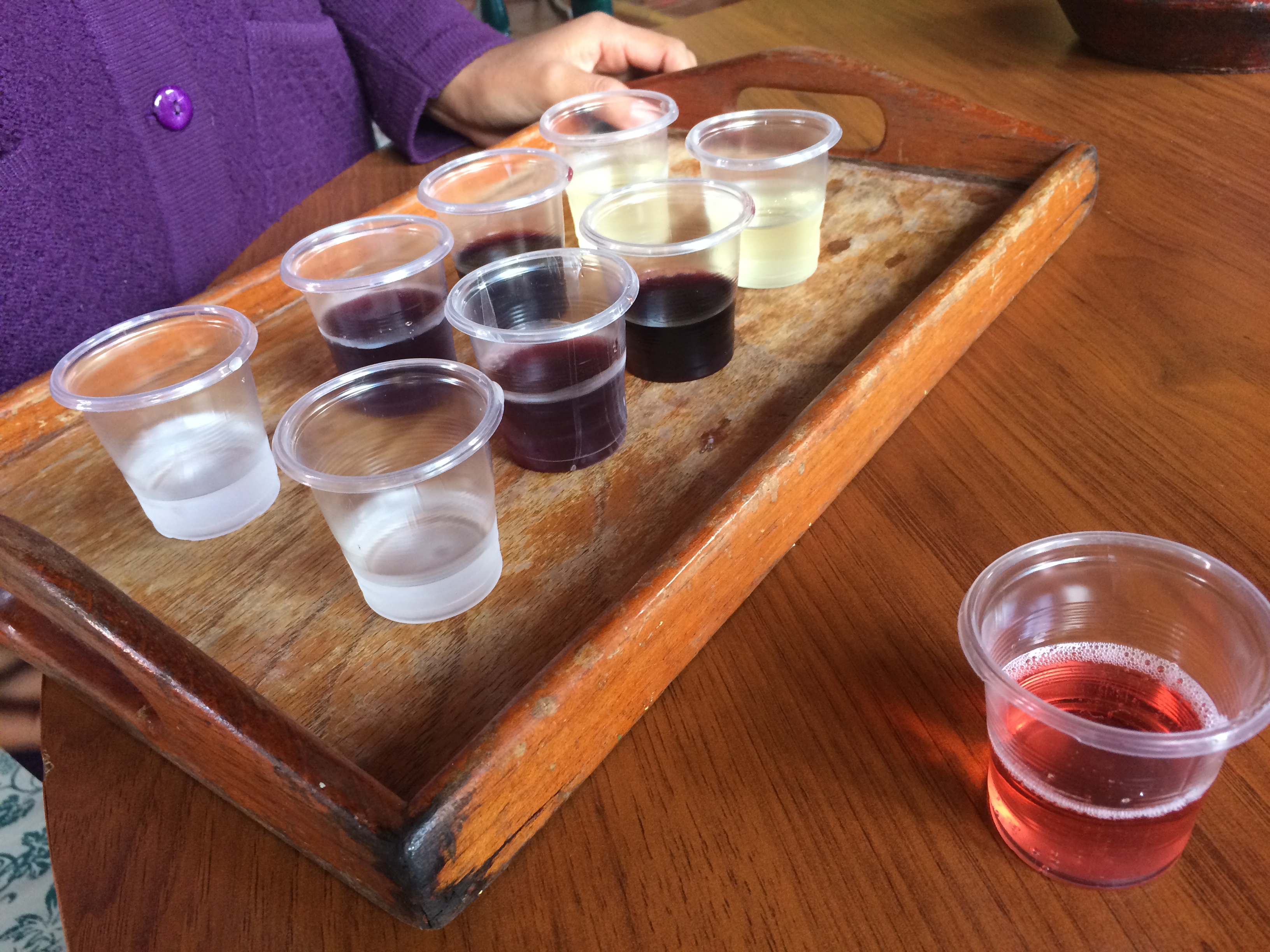
For our next tasting our taxi driver dropped us off at El Catador and returned to Ica. The tour and tastings at El Catador were brief and paled in comparison to Museo/Bodega Lazo, which was just up the street from El Catador. Museo Lazo housed an impressive collection of antiques, including traditional clay “jars” for aging wine that are still used today.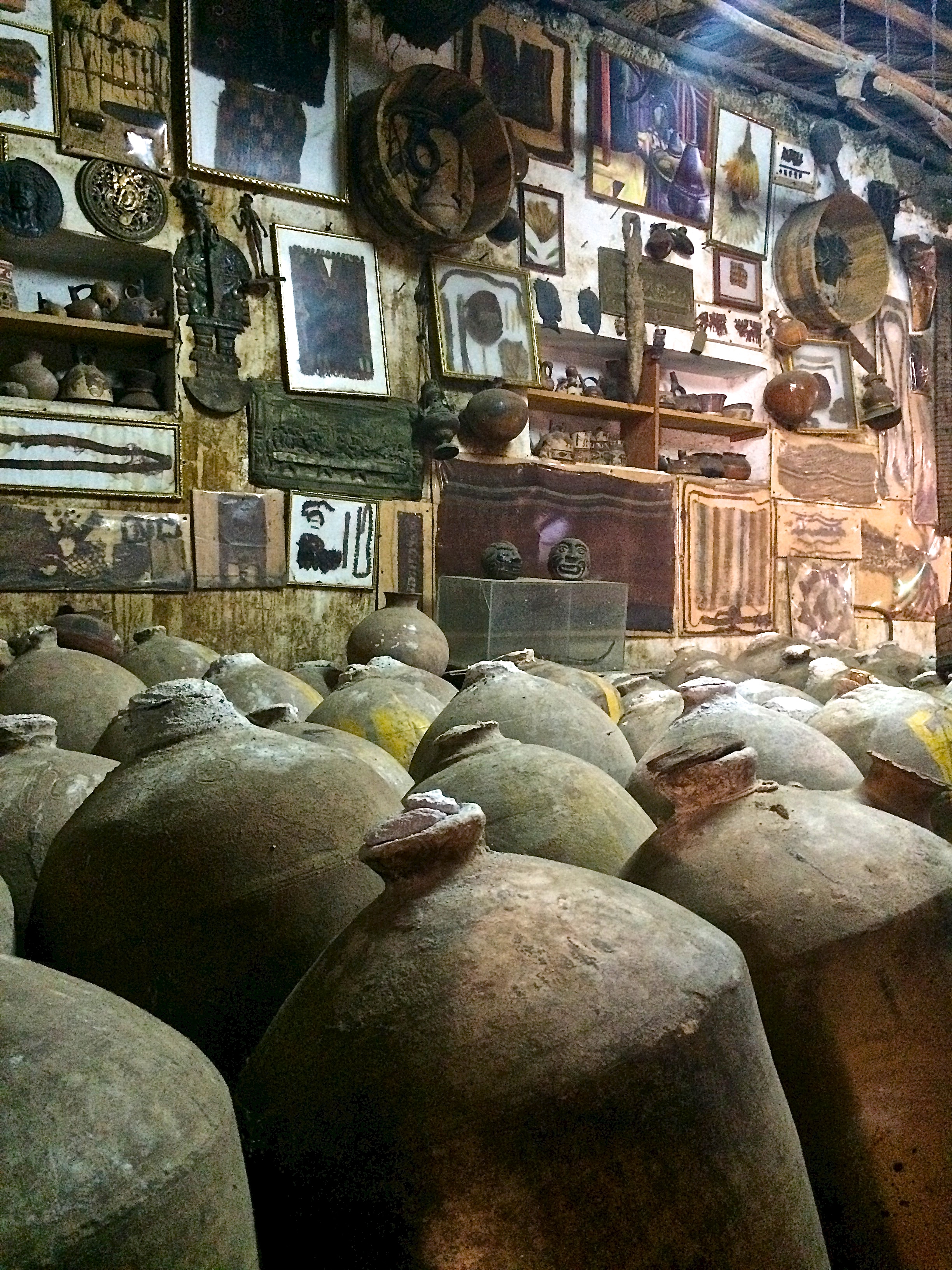
Tasting from the clay jar, using a bamboo stick as a scoop: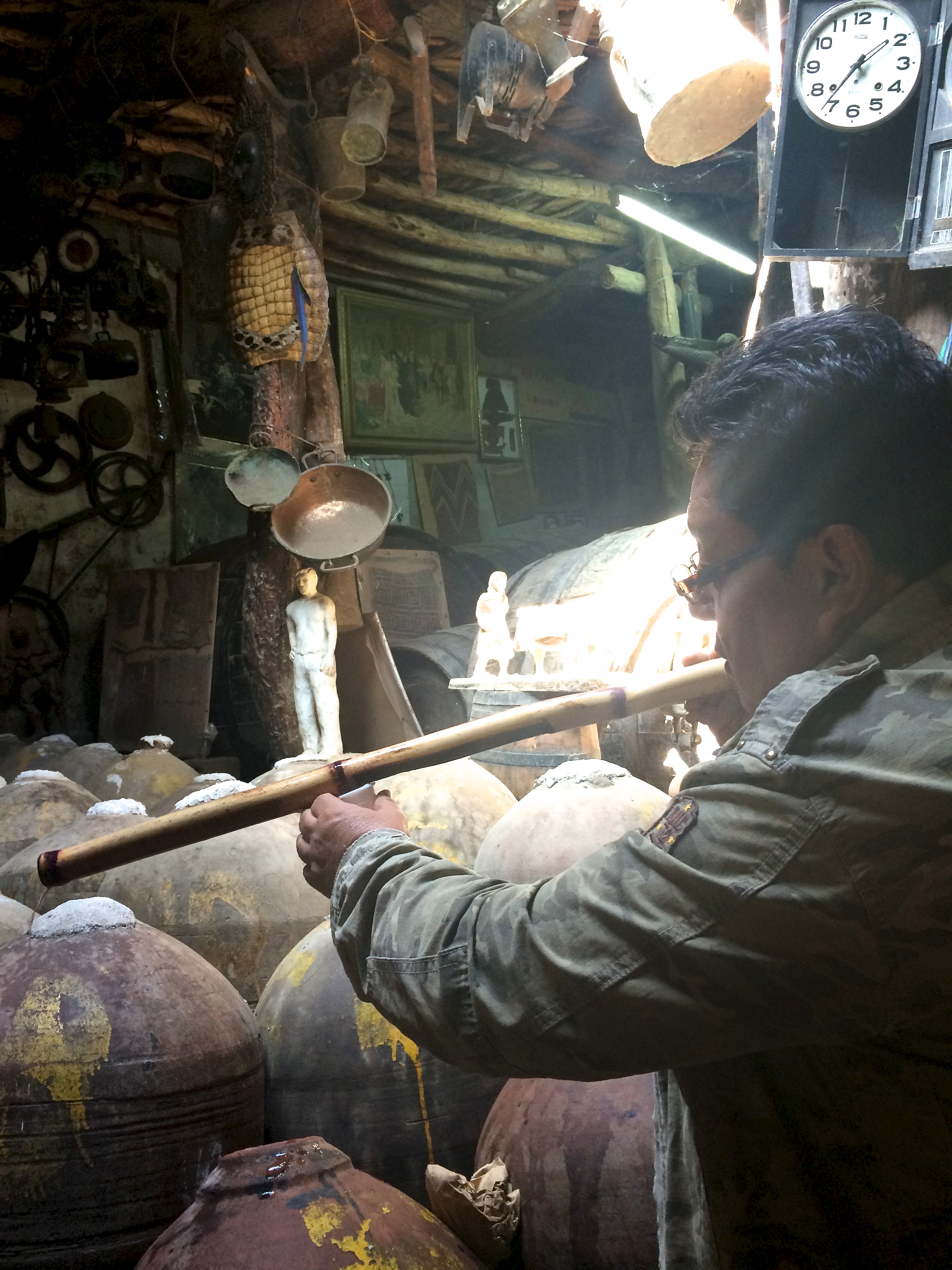
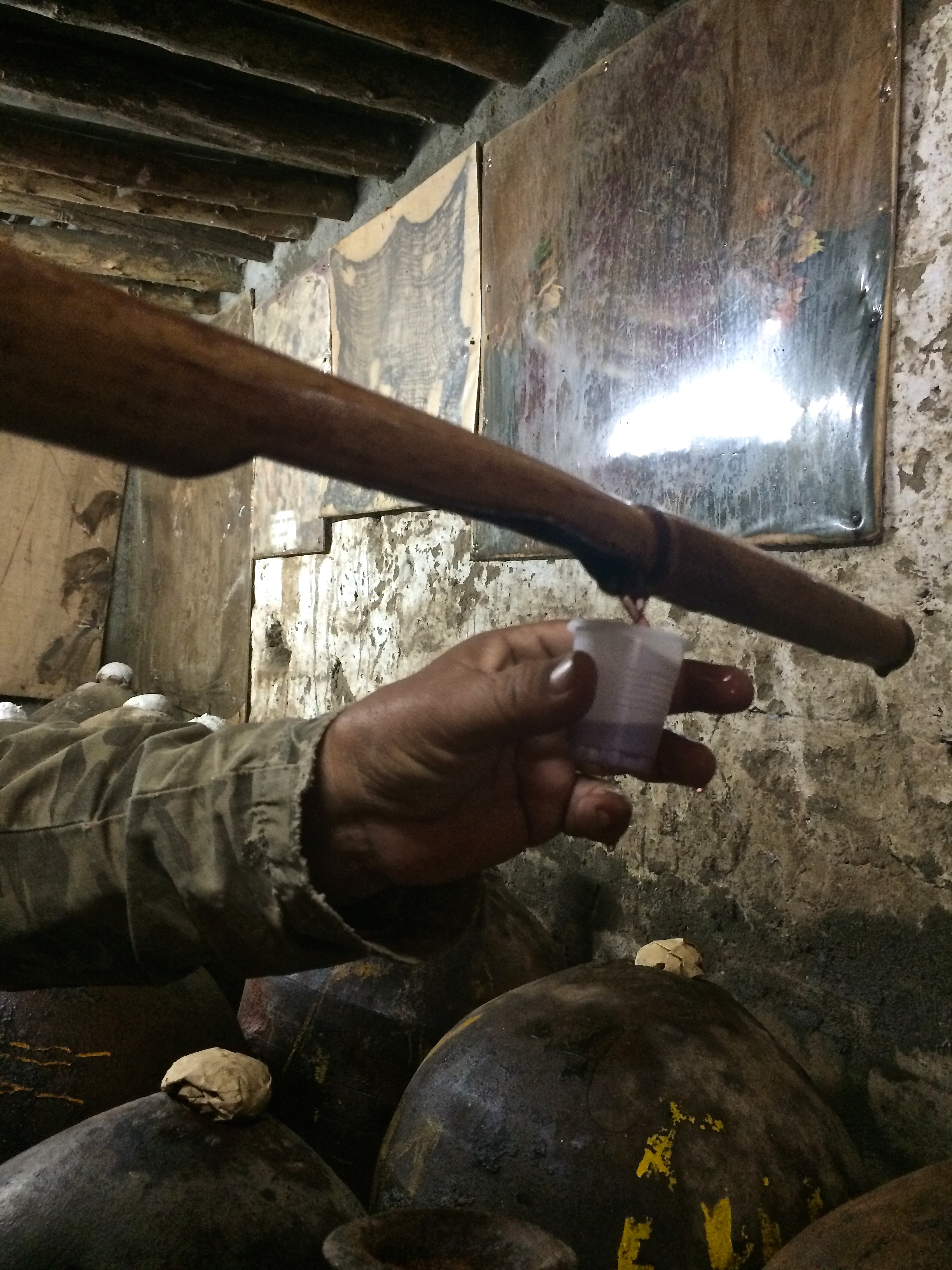
Slightly dazed, we hopped on a colectivo right in front of Museo Lazo that took us all the way back to the main square of Ica.
Ica was a quick and fairly relaxing stop for us because it was a break from all the high-altitude trekking. Our next stop in Lima would be even quicker, as it was merely a stepping stone toward even more high altitude trekking in the Cordilleras Blancas in the often overlooked northern region of Peru.

